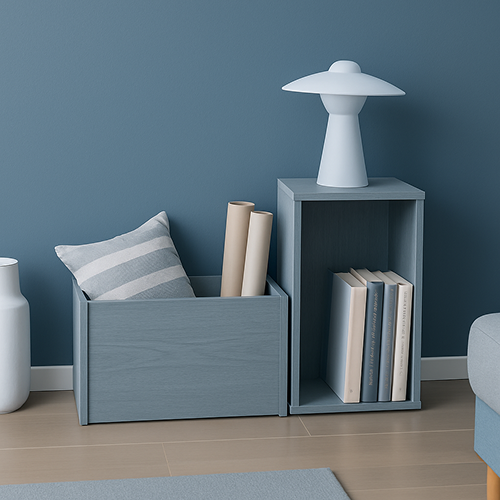We’ve all done it: a quick trip to the store turns into a spontaneous spree through the storage aisle. You spot a cute basket or a clear plastic bin and think, "This will fix everything." Only to return home and realize you have no clue where to put it—or worse, that you already have three just like it.
Storage solutions can be lifesavers, but only when they solve actual problems. Before you hit "add to cart" or haul another storage box home, take a step back. This guide will help you rethink your storage habits and get more out of the containers you already own.

1. Identify the Real Problem
Buying a storage box isn’t the solution if you haven’t figured out what’s causing the clutter.
Ask yourself:
-
Is it too much stuff?
-
No system in place?
-
Items without a "home"?
Pro tip: Storage doesn’t reduce clutter—it hides it. Until you deal with the root issue, you’re just stacking boxes.
2. Audit What You Already Own
Before you buy more, check what storage bins, baskets, and boxes you already have.
-
Are they the right size?
-
Are they being used efficiently?
-
Can you repurpose them in another room?
You might already own the perfect container—just not where you need it.
3. Measure First, Buy Later
Impulse buys are the enemy of effective storage. Take a few minutes to:
-
Measure the space you plan to store in (shelves, closets, under beds)
-
Think vertically: stackable bins are your best friend
-
Snap a photo of the space with your phone for reference
This helps avoid bins that are too wide, too short, or totally unnecessary.
4. Sort Before You Store
Don’t buy storage to hide a mess. Sort the mess first.
Try the quick-sort method:
-
Toss (broken, expired, unusable)
-
Donate (good condition but not needed)
-
Keep (what you truly use or love)
Now that you're left with only the essentials, you’ll have a better idea of how much storage you actually need.
5. Think in Zones
Instead of storing by item type, consider zones of use:
-
Entryway zone – keys, bags, umbrellas
-
Daily-use zone – chargers, notebooks, remotes
-
Rarely-used zone – seasonal decor, backup linens
This helps you organize based on when and where you use things, not just what they are.
6. Choose Function Over Aesthetic (At First)
Yes, pretty storage bins are tempting. But aesthetics should come after utility.
-
Clear bins make it easy to see what’s inside
-
Labeled boxes save time and frustration
-
Sturdy handles matter more than trendy fabric
Once you’ve solved the function, feel free to shop by style.
7. Label Everything
Even if a bin is transparent, labeling adds clarity—especially in shared spaces.
-
Use simple categories: "Office Supplies," "Extra Cords," "Craft Tools"
-
Label both the lid and the front of the container
Bonus: It keeps others from turning your system into chaos.
8. Use What You Have First
You don’t need a Pinterest-perfect system to get organized.
-
Shoe boxes, shipping boxes, or repurposed jars can work great
-
A paper bag inside a basket can contain small bits until you upgrade
-
The key is containment, not perfection
9. Go One Space at a Time
Trying to organize your whole house at once? Recipe for burnout.
Pick one drawer. Then one shelf. Then one closet.
Progress feels better than overwhelm.
10. Invest Wisely (If You Still Need To)
Once you've gone through the steps above and still need to purchase storage:
-
Look for sets to keep the look uniform
-
Choose materials that last (avoid flimsier options unless temporary)
-
Make sure your purchase solves a clear, identified need
Final Thoughts
Buying storage is easy. Organizing well is harder—but so much more satisfying. When you take the time to sort, measure, and rethink how your home functions, your storage solutions will actually solve problems rather than just contain them.
So the next time you're tempted by a cute new storage bin, pause. Ask yourself: What am I solving here? You might just realize you already had the answer—box or not.

